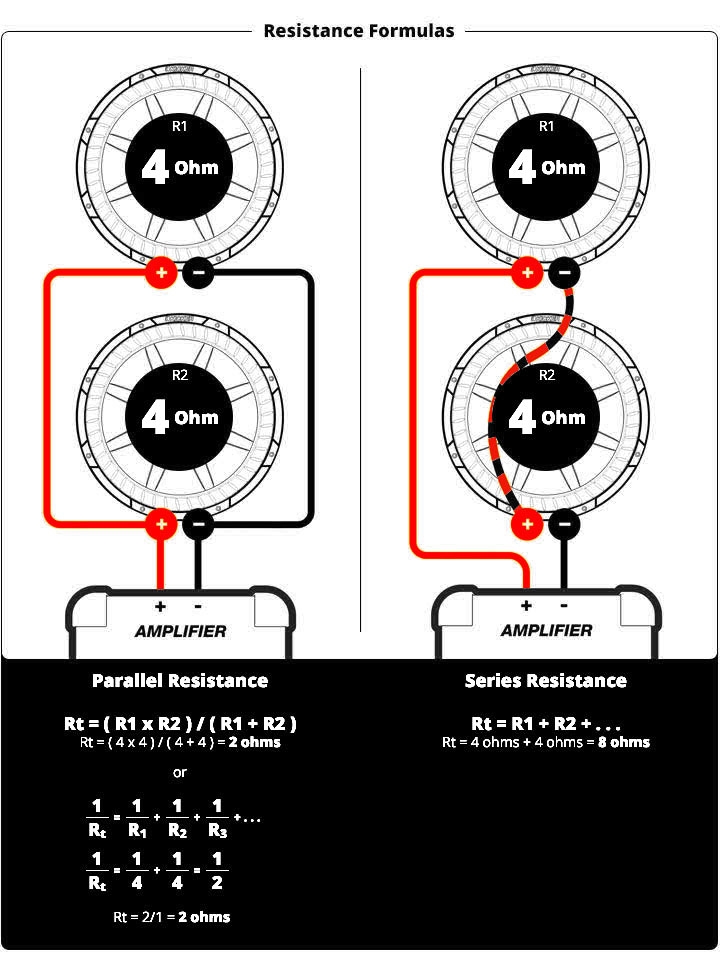When it comes to wiring subwoofers, understanding the impedance and configuration of your setup is crucial. One popular option is the 2 Ohm Dual Voice Coil (DVC) subwoofer. This type of subwoofer offers flexibility in wiring options, allowing you to customize your sound system to suit your needs.
With a 2 Ohm DVC subwoofer, you have the ability to wire it in multiple configurations, such as series or parallel. Each configuration will result in a different overall impedance, affecting how much power your subwoofer receives and how it performs. Understanding how to properly wire your 2 Ohm DVC subwoofer can make a significant impact on the sound quality of your audio system.
 2 Ohm Dual Voice Coil Wiring Diagram
2 Ohm Dual Voice Coil Wiring Diagram
One common way to wire a 2 Ohm DVC subwoofer is to wire it in parallel. This involves connecting the positive terminals together and the negative terminals together. This configuration will result in a final impedance of 1 Ohm, which is ideal for maximizing power output from your amplifier. However, it is important to ensure that your amplifier is stable at 1 Ohm before wiring your subwoofer in this configuration.
Another option is to wire the 2 Ohm DVC subwoofer in series. This involves connecting the positive terminal of one voice coil to the negative terminal of the other voice coil. The remaining positive and negative terminals are then connected to the amplifier. This configuration will result in a final impedance of 4 Ohms, which may be more suitable for some amplifiers that are not stable at lower impedance levels.
Regardless of how you choose to wire your 2 Ohm DVC subwoofer, it is important to follow the manufacturer’s recommendations and ensure that your amplifier can handle the final impedance load. Proper wiring will not only protect your equipment but also ensure that you are getting the best possible sound quality from your subwoofer.
In conclusion, the 2 Ohm Dual Voice Coil subwoofer offers versatility in wiring options, allowing you to customize your sound system to your preferences. Whether you choose to wire it in parallel or series, understanding the implications of each configuration is essential for maximizing the performance of your audio system.